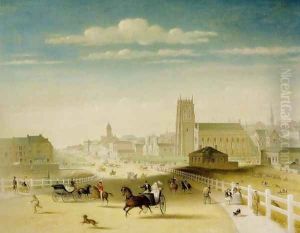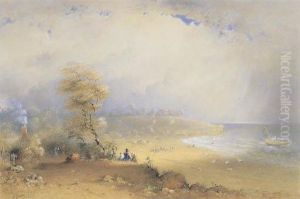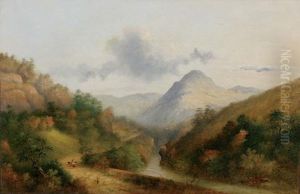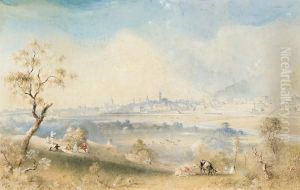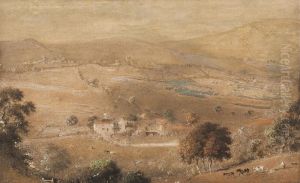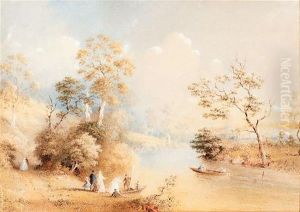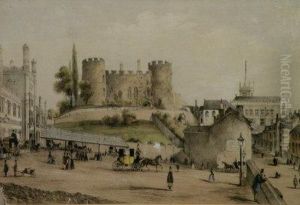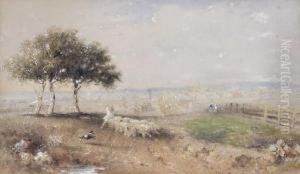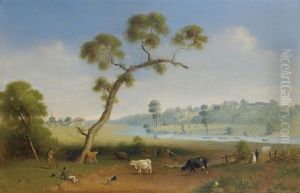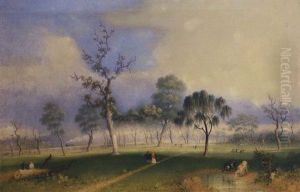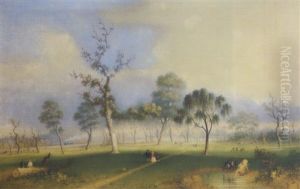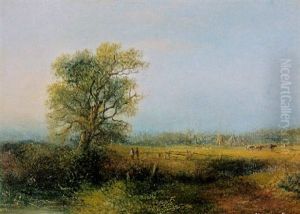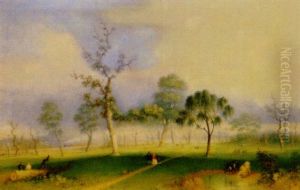Henry Burn Paintings
Henry Burn was a British artist known primarily for his watercolor landscapes and architectural paintings. Born in 1807, Burn developed an early interest in art and honed his skills as a watercolorist. Although not as widely recognized as some of his contemporaries, Burn contributed to the Victorian era's appreciation of watercolor as a serious artistic medium.
Burn's style was characterized by its meticulous detail and emphasis on the interplay of light and shadow. He often depicted scenes of the English countryside, showcasing the natural beauty of the landscape with a keen eye for the subtle changes in light across the rural settings. In addition to landscapes, Burn also painted architectural works, with a particular interest in historical buildings and churches, capturing their intricate designs and historical significance.
Throughout his career, Burn exhibited his works at various institutions, including the Royal Academy of Arts, though he was never elected as an Academician. His paintings were well received, and he gained a modest following during his lifetime. Despite this, he did not achieve the same level of fame as some of his peers, and as a result, his works are less known in the modern art world.
Henry Burn passed away in 1884, leaving behind a legacy of picturesque landscapes and architectural paintings that offer a glimpse into the Victorian era's aesthetic values. His work continues to be appreciated by art historians and collectors who value the quiet beauty and technical skill evident in his watercolors.
